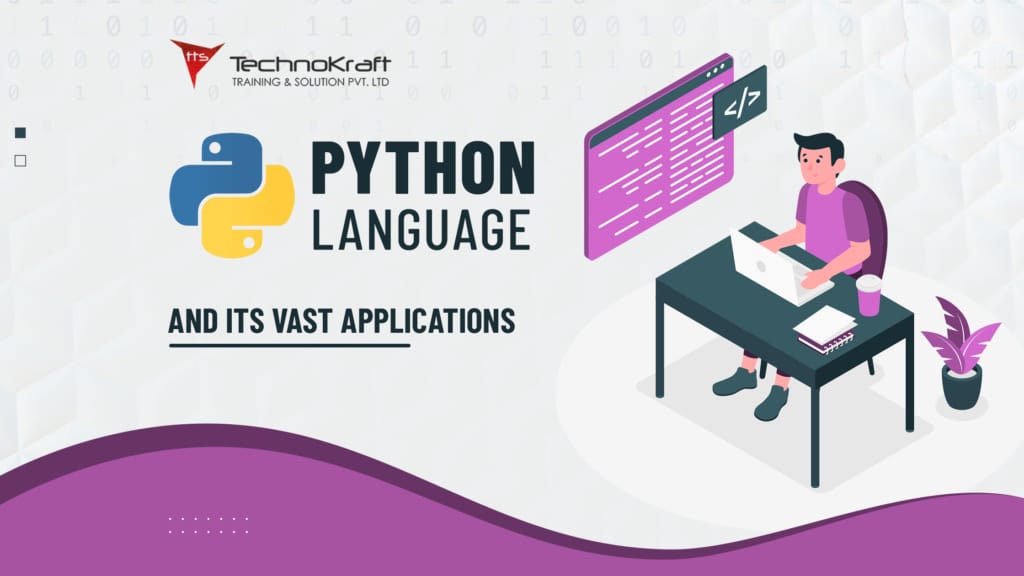Python, often referred to as the “Swiss Army Knife” of programming languages, has firmly established itself as a cornerstone in the tech world. Renowned for its simplicity, versatility, and readability, Python has become an essential tool for programmers, data scientists, web developers, and more. Join us in an exploration of Python’s extensive applications in this comprehensive guide.
Introduction to Python: A Foundation of Versatility
Born in the late 1980s and officially released in 1991 by Guido van Rossum, Python embodies a design philosophy that prioritizes code readability and an easily comprehensible syntax. This design makes Python an ideal choice for both novice and experienced developers, liberating them from wrestling with convoluted syntax and enabling a focus on problem-solving.
1. Web Development: Python's Powerhouse
Python’s prowess in web development is exemplified through robust frameworks like Django and Flask. These frameworks provide pre-built components and adhere to the “Don’t Repeat Yourself” (DRY) principle, accelerating development. Django, renowned for scalability and security, powers high-traffic giants like Instagram and Pinterest. Meanwhile, Flask’s minimalistic approach caters to smaller projects, delivering flexibility and efficiency.
2. Data Science and Machine Learning: Python's Lingua Franca
In the realm of data science and machine learning, Python reigns supreme. Libraries such as NumPy, pandas, and matplotlib constitute a comprehensive toolkit for data manipulation, analysis, and visualization. scikit-learn streamlines model training, while TensorFlow and PyTorch unlock deep learning capabilities. Python’s dominance in AI and data-driven decision-making is irrefutable.
3. Scientific Computing: Empowering Researchers
Python’s wide-ranging libraries in scientific computing, notably SciPy, offer tools for optimization, integration, interpolation, and more. The Jupyter Notebook ecosystem facilitates interactive and shareable scientific research, making Python indispensable in academia, where knowledge sharing and collaboration are paramount.
4. Automation and Scripting: Python's Efficiency
Python’s simplicity renders it an ideal choice for scripting and automation. Whether automating repetitive tasks, managing files, or controlling hardware, Python’s standard library boasts modules for diverse system-related operations. This adaptability extends to network programming, where libraries like requests and socket streamline communication.
5. Game Development: Pygame's Playground
Though not the first choice for AAA titles, Python’s Pygame library has democratized game development, catering to hobbyists and indie developers. Pygame equips developers with features for graphics, sound, and user input, making it an attractive option for crafting 2D games and honing skills.
6. Internet of Things (IoT): Python for the Future
Python’s lightweight footprint and user-friendliness position it perfectly for IoT projects. Raspberry Pi, a prevalent single-board computer, seamlessly supports Python, winning the hearts of IoT enthusiasts. Python libraries like RPi.GPIO and Adafruit CircuitPython simplify hardware interaction, empowering developers to create intelligent devices and prototypes.
7. Cybersecurity: Fortifying Digital Defenses
Python’s adaptability extends to the domain of cybersecurity, where it plays a vital role in penetration testing, vulnerability scanning, and network analysis. Frameworks such as Scapy and tools like Metasploit harness Python’s power to identify and rectify security vulnerabilities.
8. Natural Language Processing (NLP): Transforming Communication
Python’s role in natural language processing (NLP) cannot be overstated. Libraries such as NLTK, spaCy, and transformers enable developers to process and analyze human language data, ushering in applications like sentiment analysis, chatbots, and translation services.
9. DevOps: Streamlining Development
In the DevOps landscape, Python is a linchpin, automating deployment, monitoring, and scaling. Tools like Ansible and Docker leverage Python for orchestration and management tasks, refining the development-to-deployment pipeline for heightened efficiency and reliability.
10. Education: Python's Pedagogical Prowess
Python’s gentle learning curve and readability make it a favored choice for programming education. It is widely employed in introductory computer science courses and coding bootcamps. The Python community’s commitment to open-source educational resources enhances its appeal in the realm of education.
Conclusion: Python's Endless Possibilities
Python’s vast applications across multiple domains have solidified its position as a go-to programming language. Its ever-growing ecosystem of libraries and frameworks continues to empower developers and innovators, enabling them to tackle a wide range of projects efficiently and effectively. Whether you’re building a web application, delving into data science, exploring artificial intelligence, or embarking on any other programming journey, Python is a versatile and reliable companion that’s here to stay. So, if you haven’t already, it’s time to dive into Python and unlock its vast potential, and you can start by enrolling in the best Python training institute in Nashik to gain the skills you need for a successful career in Python programming.

